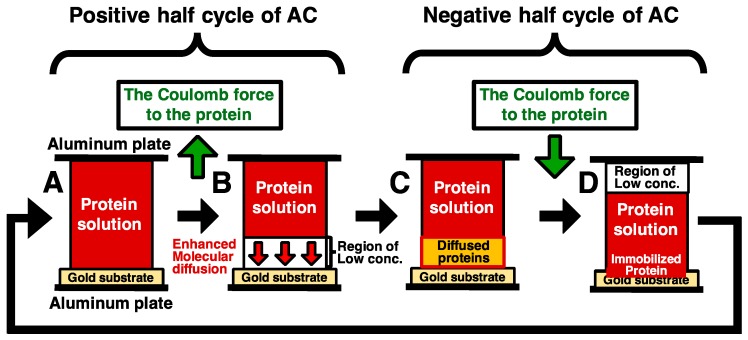Figure 1.
A model of immobilization method combining electrostatic transport and subsequent molecular diffusion of protein molecules (A). A pair of electrodes consist of a substrate electrode (the upper electrode) and the counter electrode (the lower electrode). The gap of the electrodes is filled with the protein solution, and low frequency AC electric field is applied. In this figure, green arrows show direction of Coulomb force (B). The proteins in solution are transported toward the upper electrode by Coulomb force with the application of positive half cycle of an AC electric field. The generated steep concentration gradient increases the transport rates of protein and thus enhances the molecular diffusion (C,D). When the electric field was sufficiently low during the gap between the positive and the negative half cycle, the proteins spread the low concentration area by enhanced molecular diffusion, followed by transportation of the proteins toward the substrate electrode by Coulomb force, and then the transported proteins are immobilized on a gold substrate surface. Repeating this cycle, the amount of immobilized proteins can be increased with the number of the repeated cycles.

